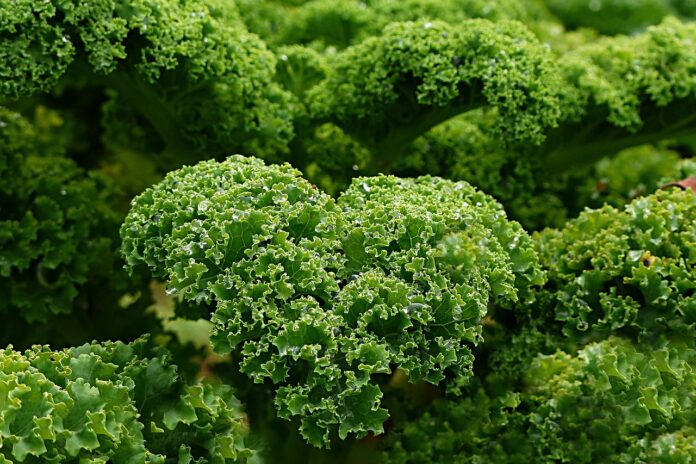Kale (Brassica oleracea var. sabellica) is a leafy green vegetable belonging to the Brassicaceae family, which includes cabbage, broccoli, and Brussels sprouts. It is celebrated for its nutrient density, versatility in culinary uses, and health benefits. This biennial plant thrives in cooler climates and has been cultivated for thousands of years, with roots tracing back to the eastern Mediterranean and Asia Minor.
Interesting Facts About Kale:
- Kale belongs to the Brassica family, which includes vegetables like broccoli, cauliflower, and Brussels sprouts
- It has ancient origins and was cultivated in the Mediterranean as far back as 2000 BCE
- The name “kale” comes from the Scottish word “kail,” meaning a type of cabbage
- It was a dietary staple during the Middle Ages, valued for its hardiness in cold climates
- Kale became popular in the U.S. in the 20th century, especially during the World Wars, when it was grown in victory gardens
- Curly kale, dinosaur kale (Lacinato), and red Russian kale are the most common varieties
- Kale provides more vitamin C per gram than an orange
- Its high potassium content can help reduce blood pressure and support heart health
- Kale contains antioxidants like lutein and zeaxanthin, which protect against eye conditions such as macular degeneration
- It’s a good source of plant-based calcium, important for bone health
- It thrives in cooler temperatures, which can make its leaves taste sweeter after a frost
- Kale can grow year-round in mild climates and is known for its sustainability in agriculture
- It can be eaten raw, sautéed, steamed, baked, or blended into smoothies
- Kale chips are a popular snack alternative for those seeking a healthier option
- Massaging raw kale with olive oil or lemon juice makes it softer and less bitter for salads
- Kale stems, often discarded, are edible and can be added to recipes for extra fiber
- Overconsumption of kale can contribute to kidney stones in people prone to oxalate issues
- It’s a staple in green smoothies, often paired with fruits like bananas or pineapples
- Kale supplements are now available in capsule or powder form for convenience
- It’s a key ingredient in the traditional Portuguese soup “caldo verde”
- Kale farming is beneficial for soil health as it improves nutrient content in crop rotation
- This vegetable has been featured in celebrity diets and food trends for its superfood status
- Wilted kale can still be used in cooked dishes like soups or stews
- Despite its health benefits, kale alone isn’t a complete source of nutrients and should be part of a varied diet
- Washing kale thoroughly is important as its crevices can harbor dirt and tiny insects
